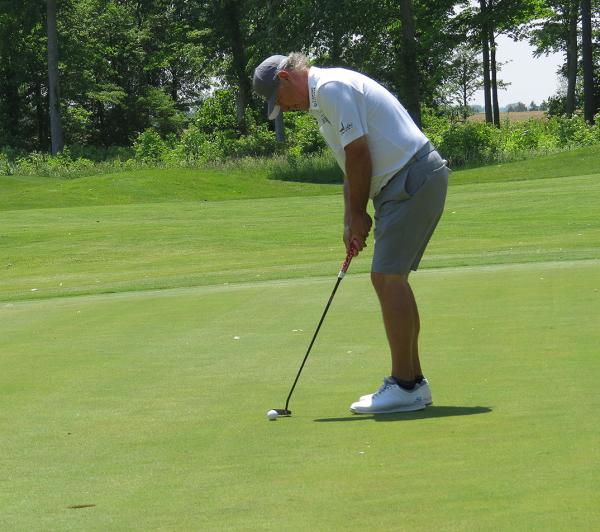It wasn't intentional, but recent research on putting green trueness might have pulled the rug out from underneath every golfer irritated by greens aerification.
 According to recent research by Doug Linde, Ph.D., of Delaware Valley University, core aerification had little if any effect on putting green trueness.
According to recent research by Doug Linde, Ph.D., of Delaware Valley University, core aerification had little if any effect on putting green trueness. The goal of the research project, which Linde presented at the recent International Turfgrass Research Conference in New Jersey, was to establish a standard for measuring putting green trueness.
"It depends on how you define trueness," Linde said.
"Is it staying on a predictable line? Is the ball bouncing a lot? If it is, it's not true. Does the ball snake left or right if it hits something?"
The research, conducted by Linde in 2015, measured how many balls holed out when rolled off a ramp from 8 feet, how far balls that didn't hole out went left or right of the cup and the spread dispersion when they came to rest.
The results showed that more often than not putts rolled off a ramp at a speed that simulated a golfer putting went ended up in the cup.
"Even if a green is core aerated, the data shows you can make most putts," Linde said. "It's baffling that at 8 feet you should be able to make most putts on a core aerated green."
For kicks, Linde duplicated his test from 16 feet, with predictable results.
"They were a lot harder to make," he said. "But I don't think most golfers are expecting to make 16-foot putts, except maybe Jordan Spieth."
The research helps identify what makes a true putting surface, and dispels some golfer conceptions.
"That wasn't what I intended," Linde said.
"Even though research shows you can make 8-foot putts with regularity on bumpy greens, in their minds, golfers think they can't, so the superintendent still needs to make greens true,"
That's because agronomists and golfers have different ways of determining putting green trueness, said Linde, whose research included a survey of 300 golfers. Researchers and golf course superintendents are more likely to base their opinion on trueness on the propensity of a ball to find its way into the cup, golfers are more influenced by aesthetics.
"For golfers, it how a ball bounces and how the green looks," Linde said. "Even if they're are not putting, when they walk onto a golf course and see (aerification) holes, they say: 'It's not true. These greens are bouncy and I can't make putts on them.' As a golfer, that's what I always thought, and that's what the data shows."

